Abstract
Rift Valley fever (RVF) is primarily a disease of sheep, cattle, other domestic animals, and man; it was believed to be relatively benign for man until 1977 when it spread to Egypt. There it caused enormous losses of sheep and cattle, and thousands of human cases occurred, with nearly 600 reported deaths. Although mosquitos are known to transmit RVF virus in epizootics and epidemics, the reservoir and means of inter-epizootic maintenance are not known. RVF epizootics can be recognized by a combination of observations: abortions and neonatal death in sheep and cattle at times when mosquitos are abundant, accompanied by cases of fever in man, which are complicated in a minority of patients by haemorrhagic fever, encephalitis, and retinitis with blindness. Vaccination of livestock with available killed or live attenuated vaccines should prevent transmission to both human subjects and animals. Although routine quarantine of animals is not deemed a practical measure, movement of animals should be restricted when an epizootic is in progress. Since it is possible that RVF may spread from Africa in the future, serological surveillance in man and animals is recommended in potentially receptive countries of the Mediterranean Basin and South-West Asia to establish baseline data and to familiarize staff with the methods of RVF diagnosis.
Full text
PDF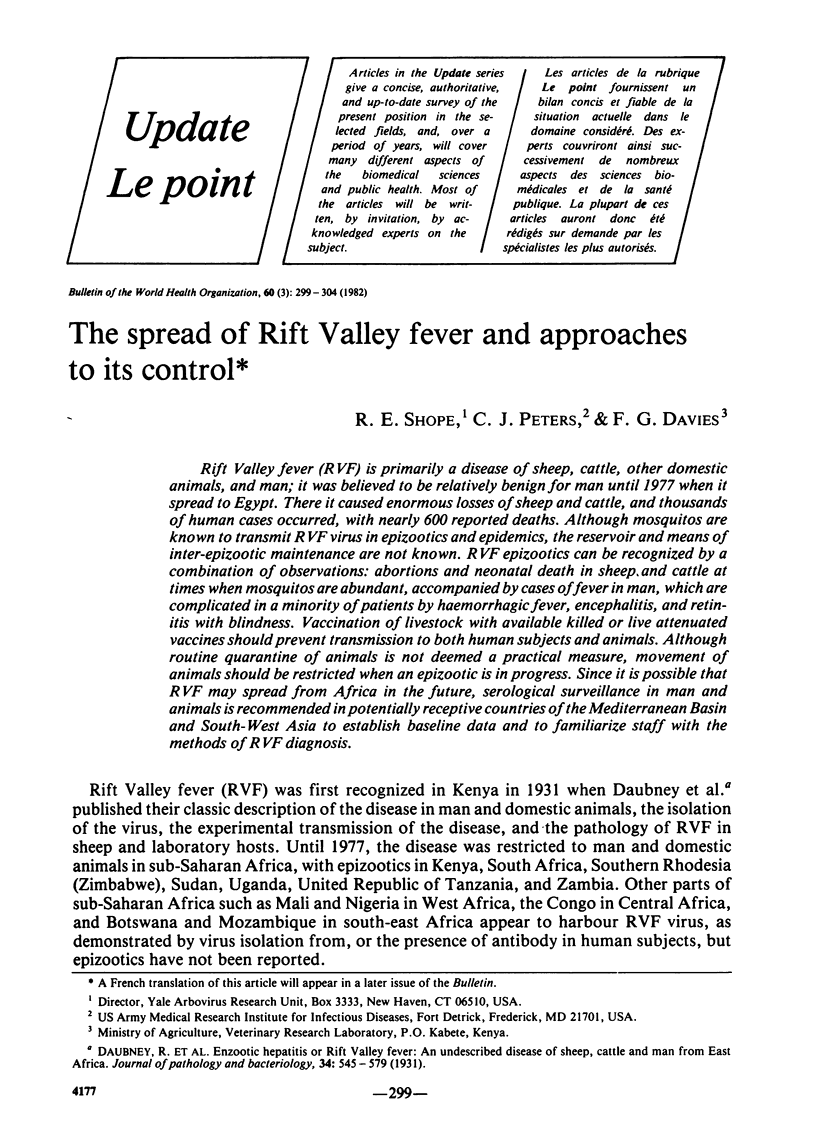
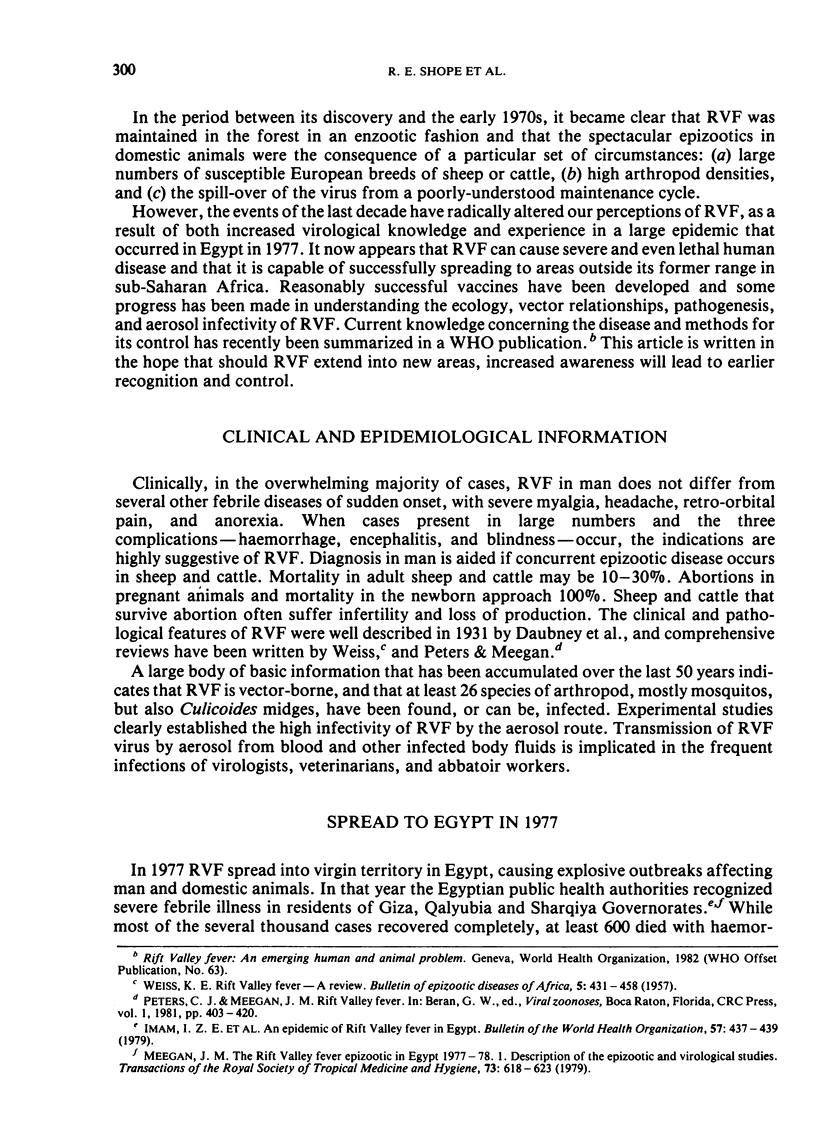
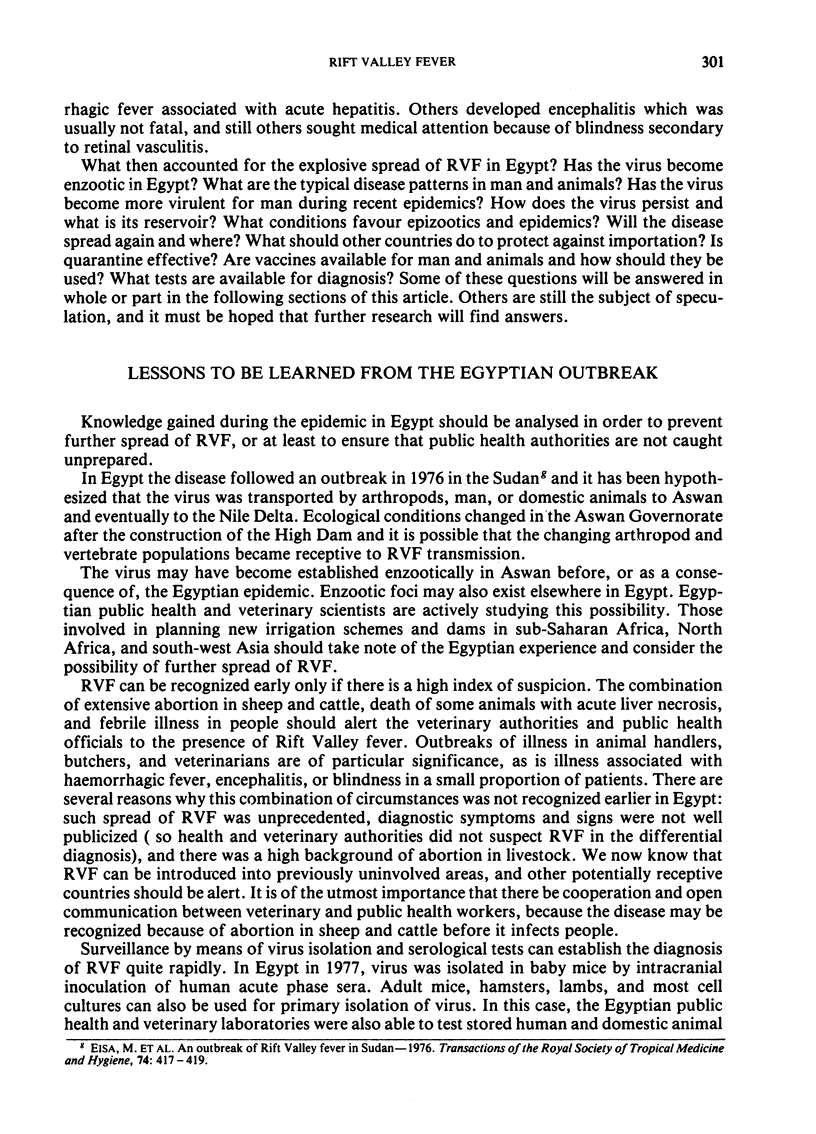
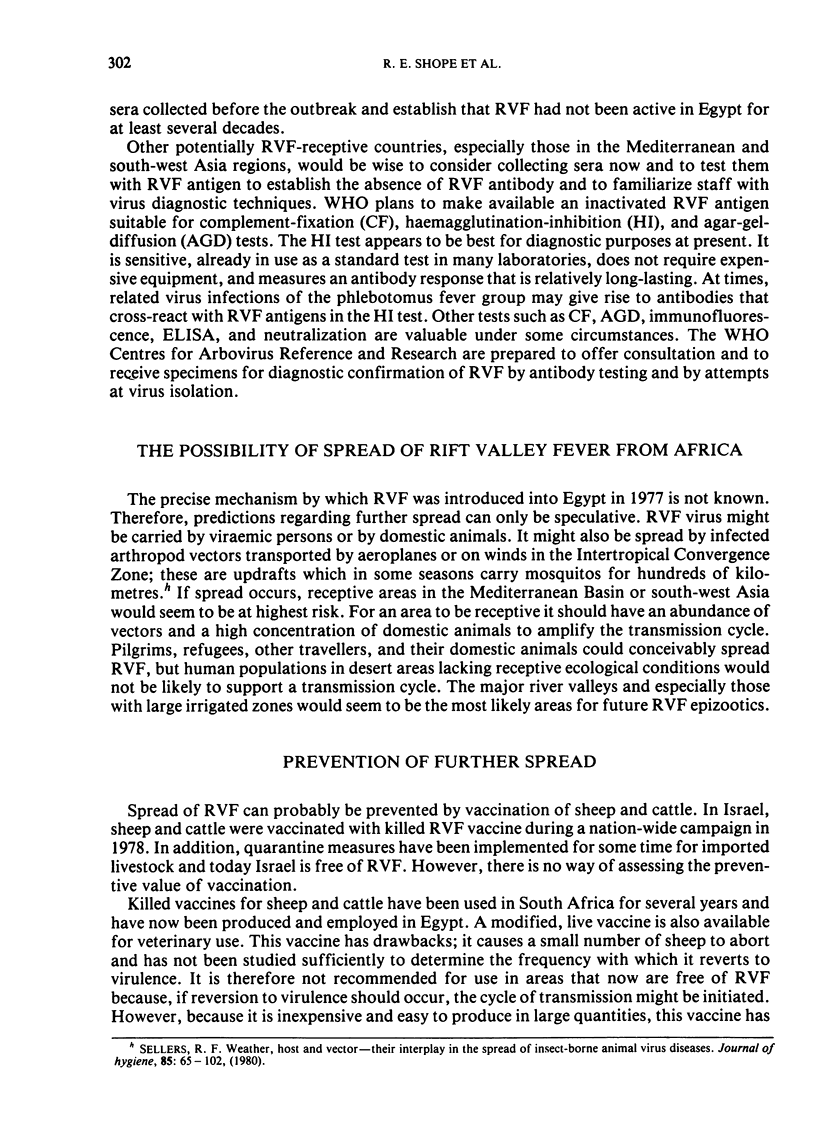
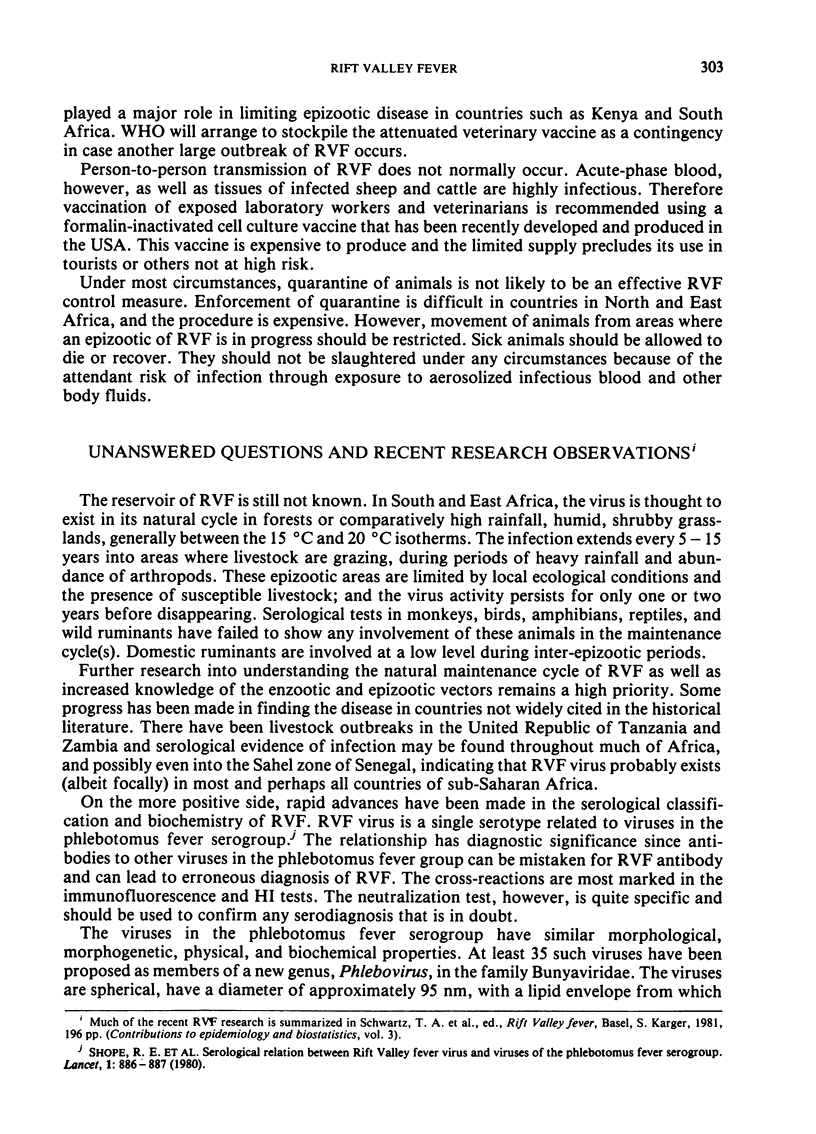
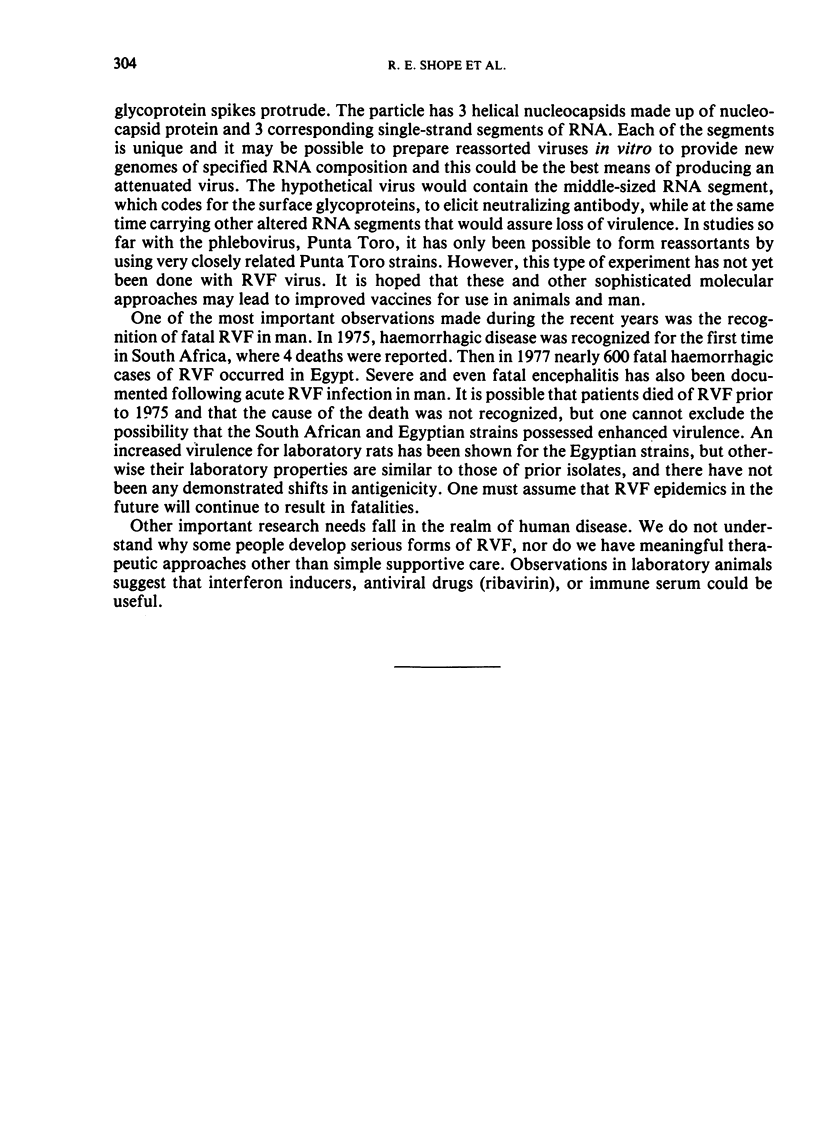
Selected References
These references are in PubMed. This may not be the complete list of references from this article.
- Eisa M., Kheir el-Sid E. D., Shomein A. M., Meegan J. M. An outbreak of Rift Valley fever in the Sudan--1976. Trans R Soc Trop Med Hyg. 1980;74(3):417–419. doi: 10.1016/0035-9203(80)90122-4. [DOI] [PubMed] [Google Scholar]
- Meegan J. M. The Rift Valley fever epizootic in Egypt 1977-78. 1. Description of the epizzotic and virological studies. Trans R Soc Trop Med Hyg. 1979;73(6):618–623. doi: 10.1016/0035-9203(79)90004-x. [DOI] [PubMed] [Google Scholar]
- Sellers R. F. Weather, host and vector--their interplay in the spread of insect-borne animal virus diseases. J Hyg (Lond) 1980 Aug;85(1):65–102. doi: 10.1017/s0022172400027108. [DOI] [PMC free article] [PubMed] [Google Scholar]
- Shope R. E., Peters C. J., Walker J. S. Serological relation between Rift Valley fever virus and viruses of phlebotomus fever serogroup. Lancet. 1980 Apr 19;1(8173):886–887. doi: 10.1016/s0140-6736(80)91395-1. [DOI] [PubMed] [Google Scholar]


